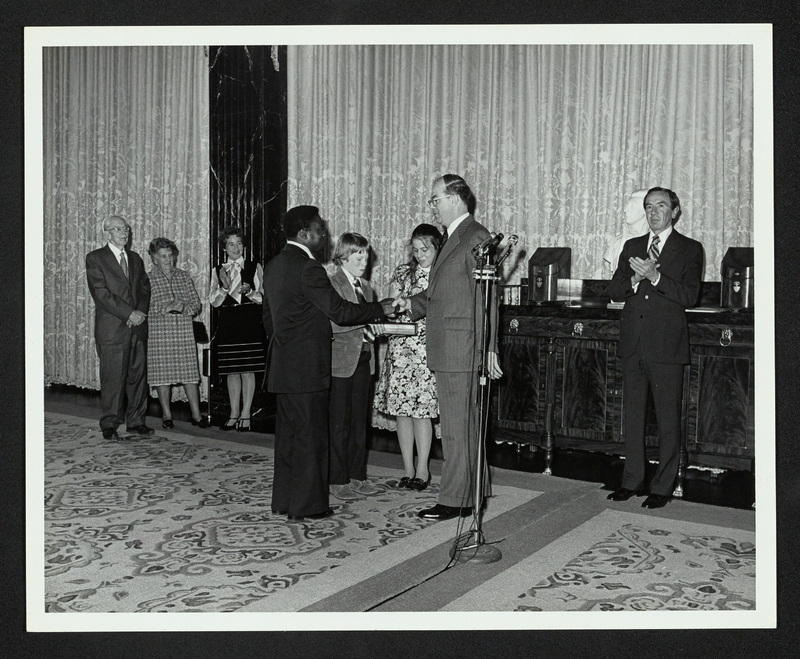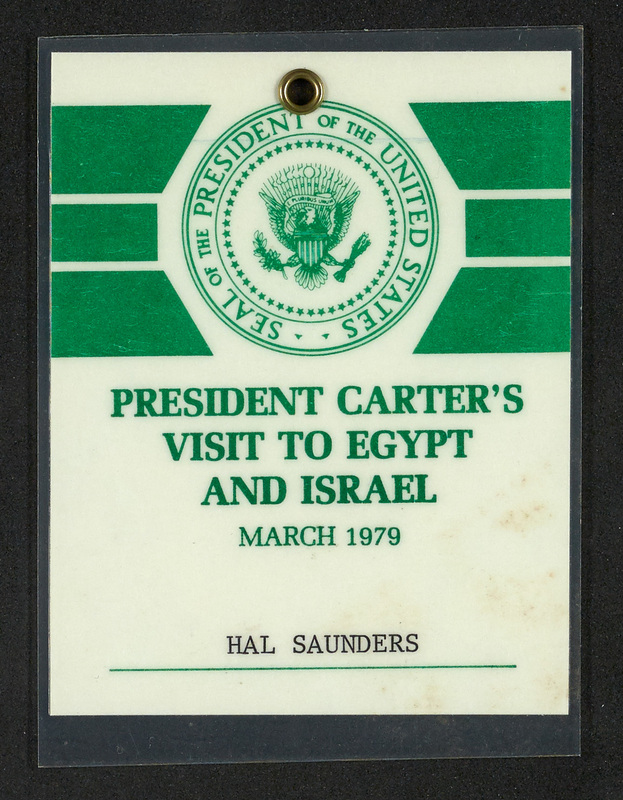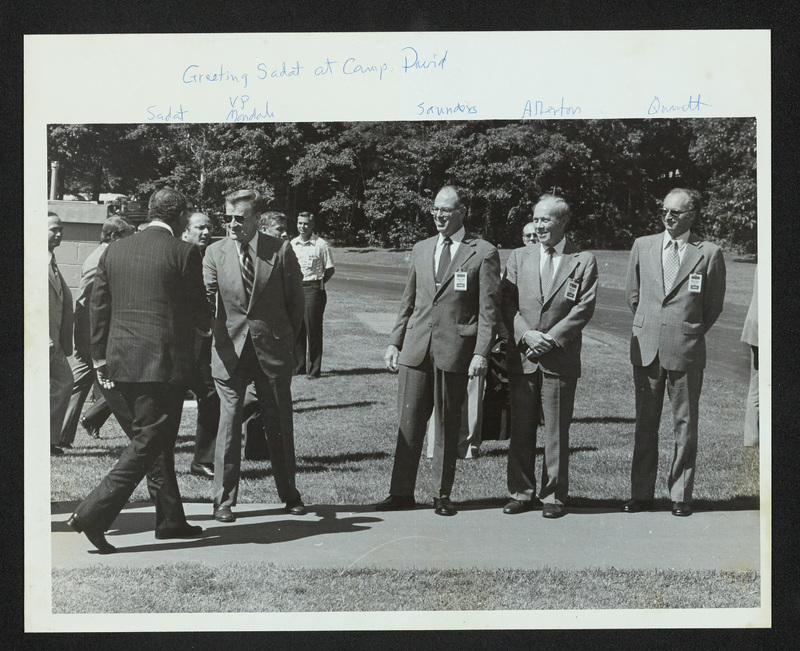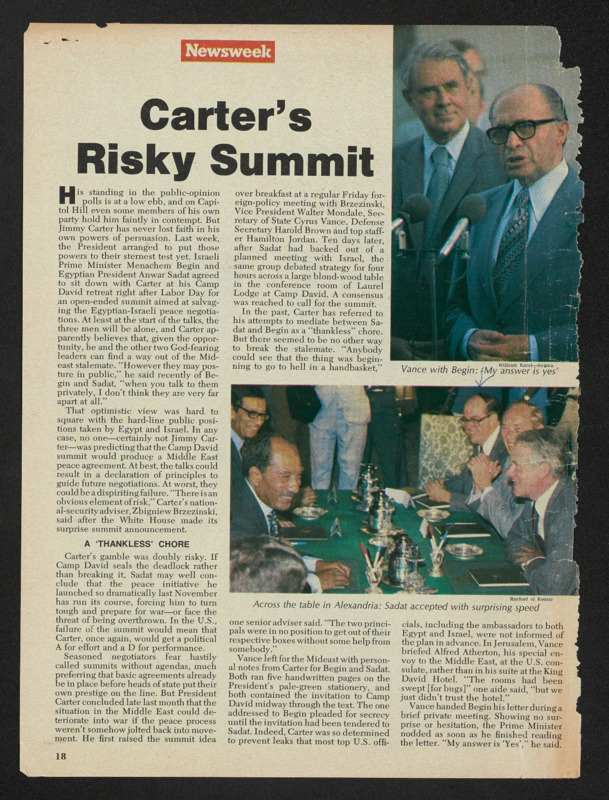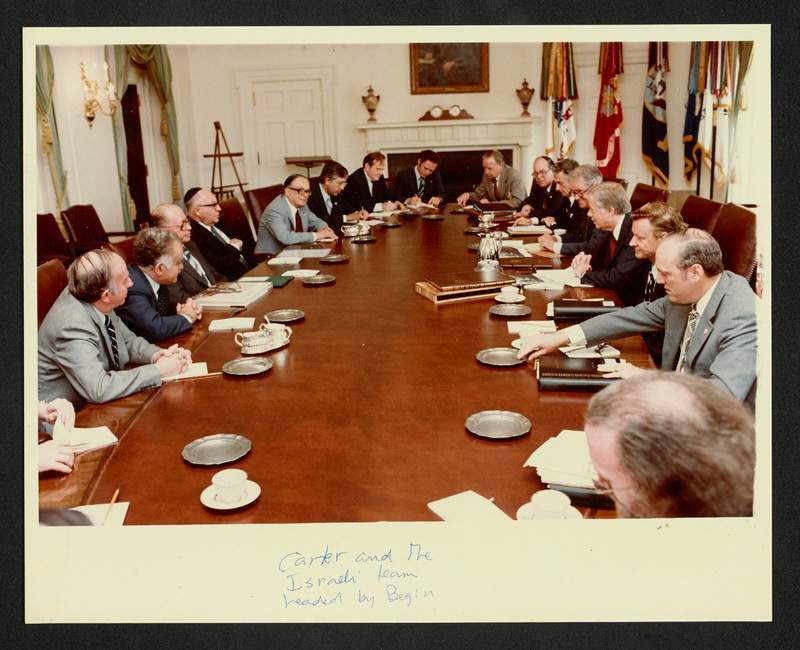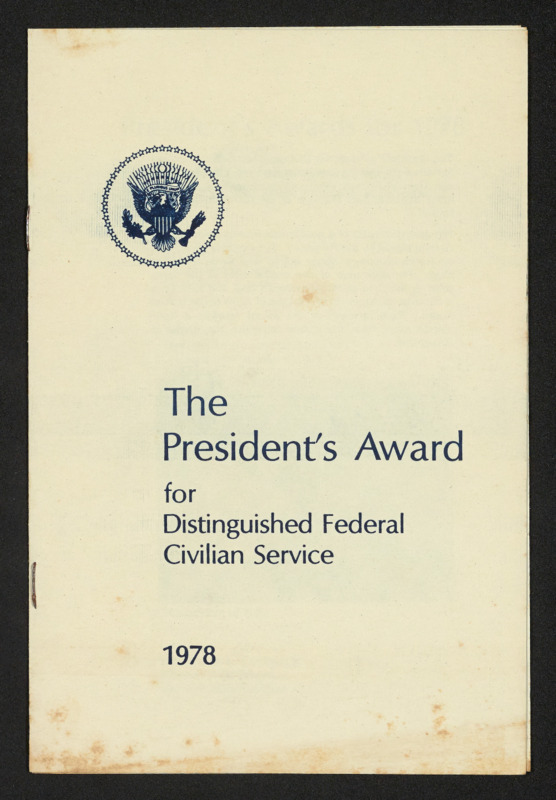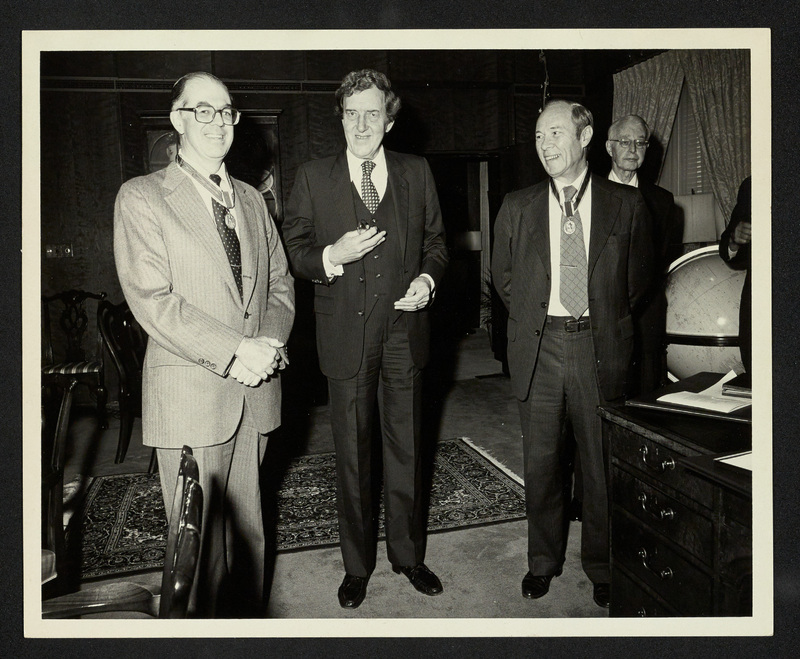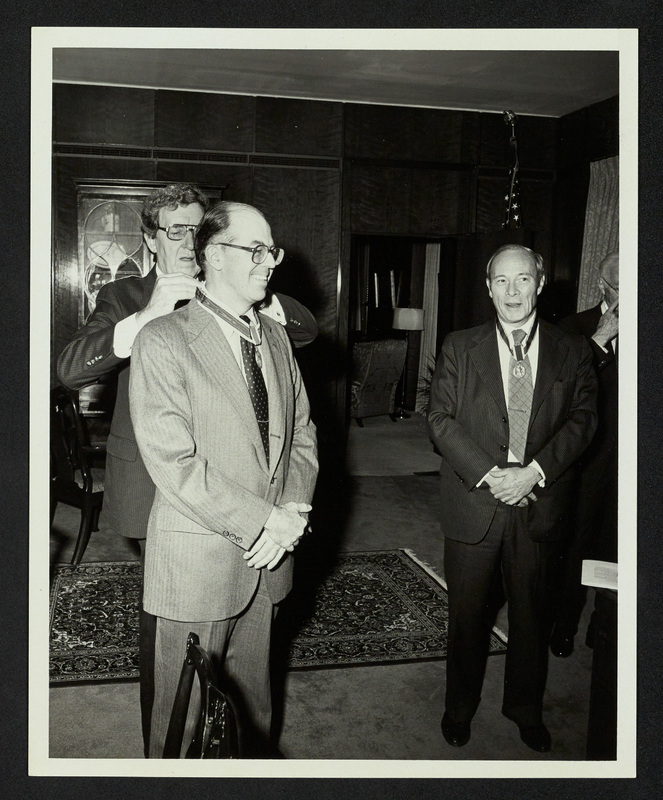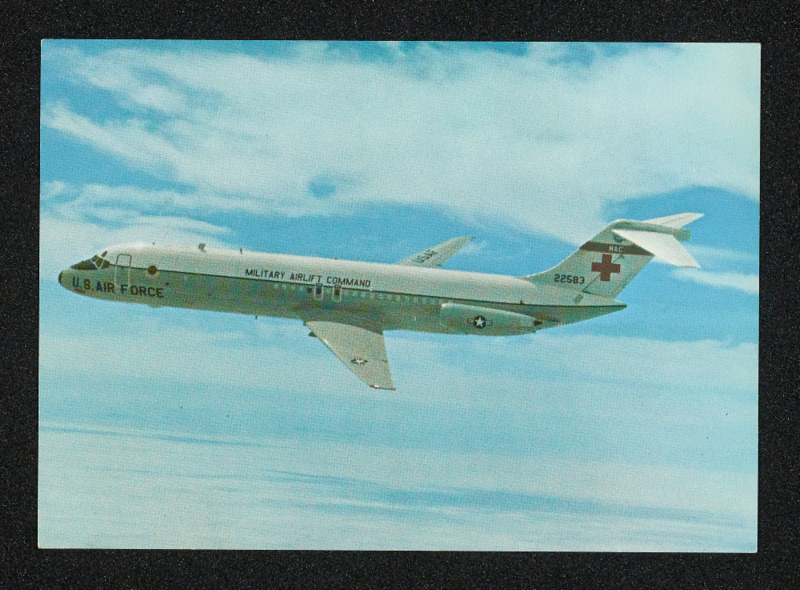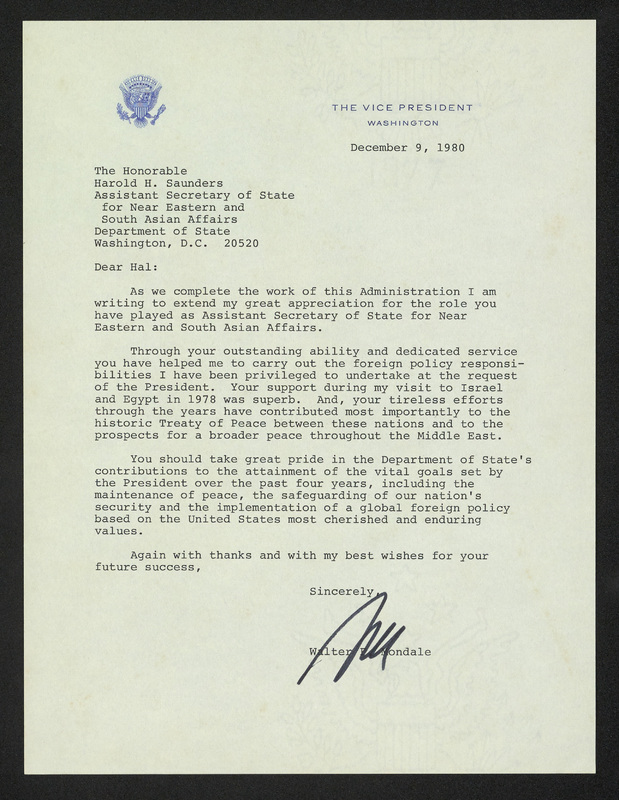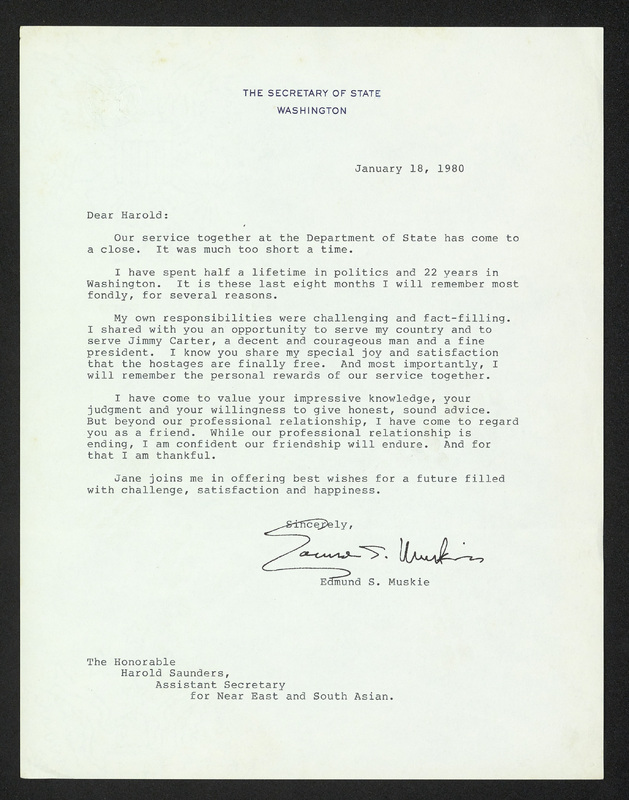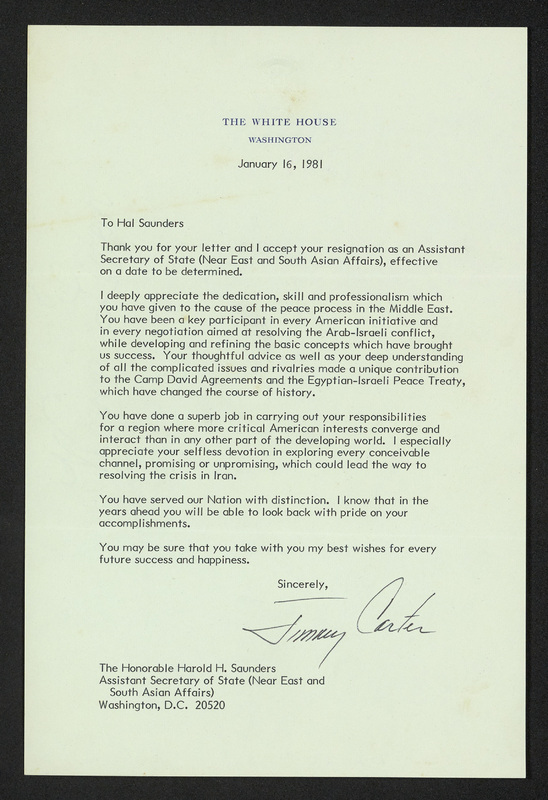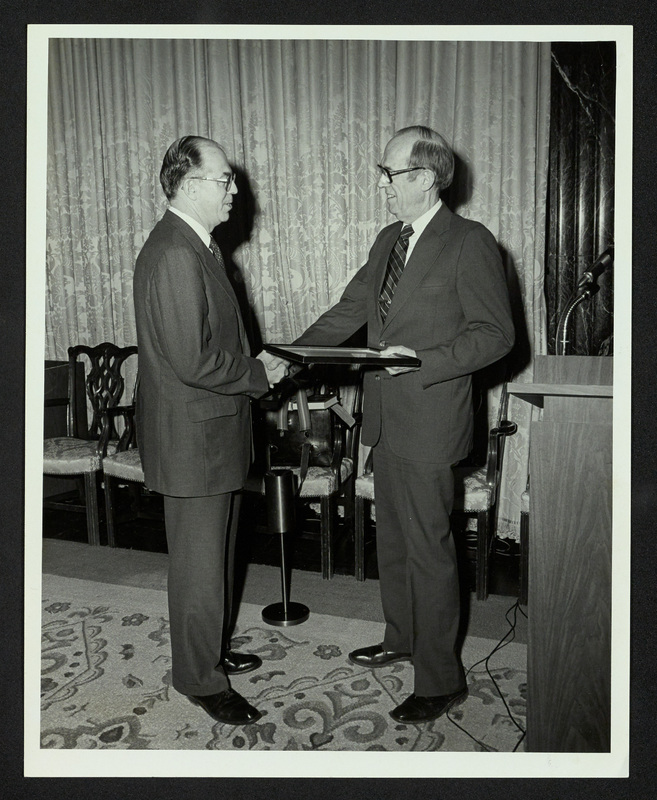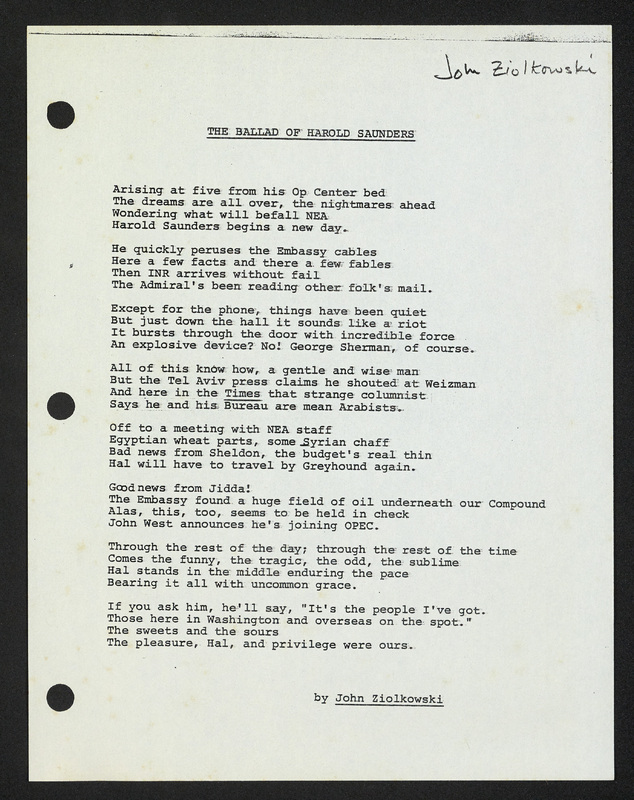Assistant Secretary of State for Near Eastern and South Asian Affairs, 1978-1981
Quickly after taking over for Roy Atherton, Saunders and others went to the Middle East with the directive to invite the Israeli and Egyptian leadership to Camp David for peace negotiations. Once the invitations were settled, preparations for the meeting were undertaken. They even went so far as to build an actual round table for the negotiations. Ultimately, the discussions were productive and the Accords laid the groundwork for a 1979 Egypt-Israeli peace treaty and earned Sadat and Begin the 1978 Nobel Peace Prize.
Harold Saunders played a pivotal role in the Camp David Accords—a pair of political agreements between Egyptian President Anwar Sadat and Israeli Prime Minister Menachem Begin—which were mediated by President Jimmy Carter at Camp David itself.
Saunders’ remarkable work in diplomatic service earned him growing respect and recognition over the decades. In 1978, his record earned him The President’s Award for Distinguished Federal Civilian Service, the highest honor that can be given for career civilian service.
Most of the rest of Saunders' time in government was spent focused on the Iran Hostage Crisis, during which fifty-two U.S. diplomats and citizens were held hostage by a militaristic group supporting the Iranian Revolution. They were held hostage from November 4, 1979 to January 20, 1981, and finally released as the result of tireless negotiations facilitated in large part by Saunders and his colleagues. In this role, Saunders was the leading adviser to Deputy Secretary of State Warren M. Christopher, who was the Carter administration’s chief negotiator in the crisis. Saunders was on the plane which flew the former hostages out of Iran once an agreement was reached.
As the Iran Hostage Crisis was resolved, Saunders’ decades of government service came to an end. Still devoted to brokering peace, he moved to the private sector to further the cause. His departure from the federal government gave his colleagues the chance to truly honor his innumerable accomplishments for the country.
